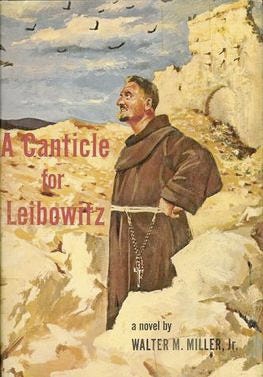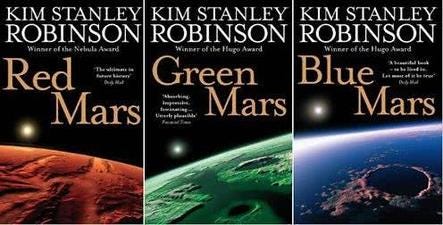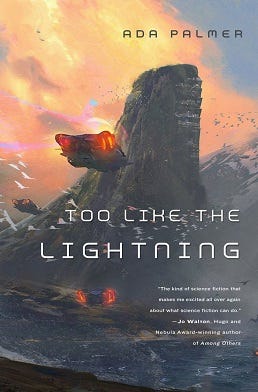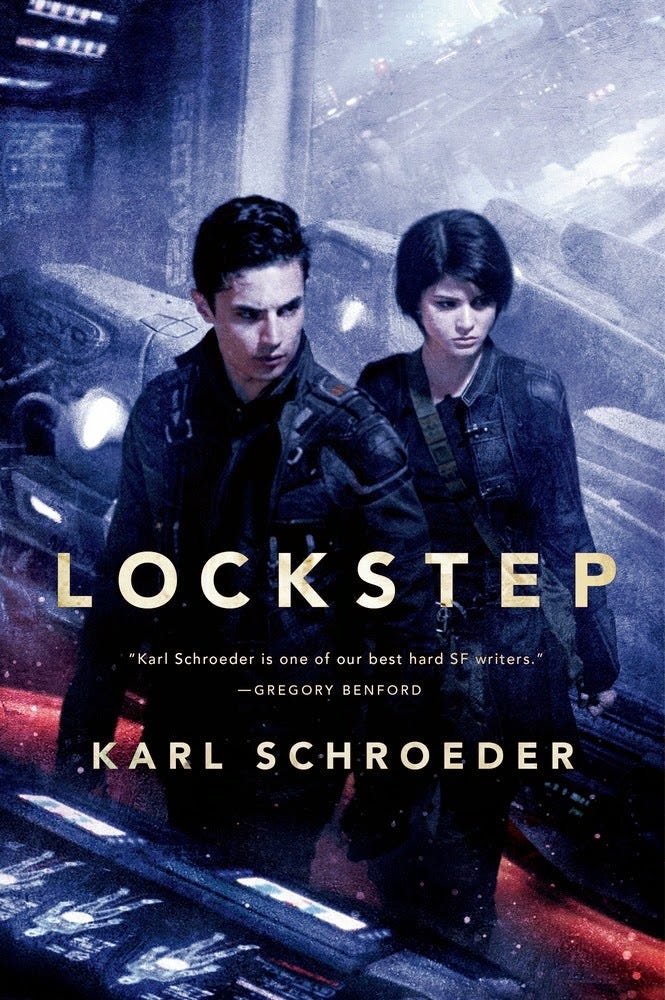Who Paints the Dew on the Daisy?
What's your theory of change? What do you think makes the world go around? It matters
I talked about space settlement in my last couple of posts; but this is not a newsletter about that. Space was just an example to illustrate an approach to thinking about complex problems—and a prototype for designing a purely 21st century science fiction. In that example, the approach was reframing and the 21st century paradigm abandoned the dichotomy of the company town vs. the space colony visions of the future. Today, I’ll look at something completely different, though still using the lens of science fiction and its intersection point with foresight methods.
If we have any hope of solving the massive, systemic problems that threaten our futures, we have to be aware of how we think about change.
When we think about the future, we engage with some of our deepest and most unexamined biases. We make unconscious assumptions about what it is that drives change in the world—the fundamental force or characteristic of reality that literally tells us what is possible, and what is fantasy. Recognizing your own unconscious theory of change gives you an opportunity to examine it, and maybe change it, and that can deeply affect your ability to make changes in your own life and in the world around you.
Here are six theories of change, ranked (roughly) from the most primordial and instinctive to the newest and most non-intuitive. Each one comes with an example from Science Fiction—a classic novel or series where one theory is taken as the core principle of reality, and everything falls out from that. They show how a theory of change can become a totalizing principle, explaining everything, rationalizing coincidence and accident, and grinding down any alternative narrative. In one way or another, intentionally or not, each of the following books constructs an inescapable prison with its theory. What’s important to the story I’m telling with them is that they seem to represent increasingly mature ideas of how change happens. I’ll end with what I think is an appropriately 21st-century paradigm for change (though it didn’t originate in 21c) that might give us a way to frame science fiction ideas—and real-world problems—in a way that’s appropriate to now.
What if we reframed human history as the story of civilizations adopting increasingly mature theories of change?
Theory 1: He Did It
Our most basic childhood theory is simple: everything happens because somebody made it happen. The universe exists because somebody made it. Things have meaning because somebody gives them meaning. In the most benign version of this theory, the faeries paint the dew on the daisies. In its ultimate form, a tyrannical and jealous God pulls the strings of history like a puppet’s, and for everything else that happens, we must find someone to blame. This theory often leads people to flirt with prophecy and fortune-telling, where they attempt to decipher the intentions of the invisible agencies that surround us.
Example: Dune by Frank Herbert
Dune is a masterclass in this theory of change. The novel revolves around Paul Atreides, a young man thrust into the role of a prophet. Yet, this is a prophet without a god. In the absence of a divine entity to "paint the dew on the daisy," Paul takes on the role himself, but while he does usher in the golden age he wants, it’s bought through acts of unimaginable violence and cruelty. Paul is ultimately a tragic and even repulsive figure, an absence, a negative space at the center of the whirlwind of change he creates.
Theory 2: Natural Cycles
…And so the world goes round and round, and every time and season
With pleasure and with profit crowns the passage of the year.
So through every time of life, to him who acts with reason,
The beauty of all things doth appear.
—from an English traditional song, “The Seasons”
The cyclic view of history posits that everything is born, grows, decays, and eventually dies. It’s true for living things, and it’s true for species, for mountains and planets, and—in particular—for whole civilizations. The inevitability of decay and rebirth is a lens through which many people view the world, consciously or not.
Example: A Canticle for Leibowitz by Walter M. Miller Jr.
In A Canticle for Leibowitz, the cyclic view of history is presented ironically. The story takes place in a post-apocalyptic world where a new civilization is born from the ashes of the old. It's a tale that underscores the inevitability of cycles, even in the face of utter destruction.
Theory 3: It's All Clockwork
“An intellect which at a certain moment would know all forces that set nature in motion, and all positions of all items of which nature is composed, if this intellect were also vast enough to submit these data to analysis, it would embrace in a single formula the movements of the greatest bodies of the universe and those of the tiniest atom; for such an intellect nothing would be uncertain and the future just like the past would be present before its eyes.”
—Pierre Simon Laplace, “A Philosophical Essay on Probabilities”
Inspired by Laplace's deterministic view of the universe, this theory suggests that everything is predetermined. This theory gives us storytellers two things: nihilistic despair, and (over)confidence in technology. This is the realm of strategic planning, grand engineering projects, and generational social change. It presumes that we understand the world right now and know what can change. Knowing what can change, we can decide what to do.
If history is deterministic, then we can predict it, at least in a broad sweep, but in a more fine-grained way than the cyclic theories do. In this we see the germ of the whole idea of progress, whether that be accomplished through technological development or the conscious design of society and, for example, “Soviet man.”
Example: The Foundation Series by Isaac Asimov
Asimov's Foundation series is probably the ultimate example of this deterministic view. The series explores the idea that history can be mathematically predicted, albeit in a broad sense. It's a world where strategic planning and foresight are not just possible but essential for the survival of civilizations.
Theory 4: We Can Manage The System
Systems theory, which emerged in the 20th century, doesn’t abandon the causation of the clockwork universe but tries to marry it to a growing realization that the world is not just complicated, but complex. By looking at systems as collections of smaller, interconnected, and reinforcing parts, and by introducing the key concept of feedback, Systems tried to become an objective science of control. Systems theory has had a massive impact on nearly every realm of human endeavour, from the sciences to the arts and even politics (fear of Salvador Allende’s new cybernetic governmental apparatus for Chile, Cybersyn, was one of the factors that led to Pinochet’s barbaric 1973 coup). The classic introductory book on Systems is Donella H. Meadows’ Thinking in Systems.
Example: The Mars Trilogy by Kim Stanley Robinson
Robinson's Mars Trilogy is a deep dive into systems theory. The series explores the complexities involved in colonizing and terraforming Mars, from political to scientific to social factors. It's a narrative that shows how understanding and managing complex systems can lead to monumental achievements.
Theory 5: The Dimension of Surprise
Now we’re getting to late-20th century ideas about change. It was only in the past forty years or so that we learned that irreducible complexity means that even in a fully deterministic universe, prediction is impossible. This discovery shattered the ambitions of Asimov-style planners and discredited the ‘futurist as professional prophet’ meme. Stephen Wolfram has shown that irreducible complexity underlies even the simplest of systems; that being true, the future (at least the parts that we care about) has to be seen as the dimension of surprise.
Foresight practitioners had long included surprise in their analyses. They refer to unforeseen events as “wild card” scenarios. The author who most successfully brought the idea of surprise in planning to public attention is Nassim Nicholas Taleb with his idea of the ‘black swan.’
It is still popular to discuss wild-card scenarios in terms of ‘high impact, low probability events.’ I’ve always preferred to talk about them as ‘high-impact events for which a probability cannot be assessed.’ It is the complete absence of probabilistic insight that makes certain kinds of planning, for instance, pandemic planning, so important. If they’re called ‘low probability’ then despite how high their potential impact, planning will not happen. Realizing that you don’t know what the probability is should be terrifying enough that you turn your attention to such possibilities.
Alicia Juarrero discusses complexity in the context of cognitive science in her book Dynamics in Action; she also gives us a clue as to why humans tell stories:
Narrative, as it turns out, is a mode of analysis that we seemed to have evolved for use in describing particular kinds of systems: non-repeating ones that can only be understood in terms of two factors: context, and history. One of her examples is tornadoes. Tornadoes as a general phenomenon might be describable in the abstract, but any given tornado can only be talked about in narrative terms: in terms of the situation where it happened, and its particular sequence of events. For Juarreo, then, narrative is the faculty we evolved to describe complex adaptive systems.
Brian Boyd says that “Narrative is the default mode of understanding of the human mind. By this I mean that if the mind can understand something in narrative terms, it automatically will.”
Taking Juarrero and Boyd at face value, it would seem that, properly deployed, narrative should be one of the most powerful tools of the foresight practitioner. Some organizations have taken this idea to heart.
Example: Too Like the Lightning by Ada Palmer
Ada Palmer's novel is a great example of the power of surprise. It’s set several hundred years in the future, in a seemingly Utopian world where people believe they understand the universe and themselves completely. Boy, are they in for a surprise…
According to the playful criteria I’ve been setting up, Too Like the Lightning is 21st-century science fiction. It engages with the uncertainties and concerns of the present moment by directly taking on our experience of the 2020s: that of being battered by constant surprises—the rise of fascism, a pandemic, climate change, AI. All things we kinda sorta saw coming—but all crises whose timescale and probability could not be assessed ahead of time.
Theory 6: Constraint

I’d like to end with a less commonly known theory. Constraint is both an ancient and an utterly modern model of change. It’s both subtle and powerful, simple and very hard to comprehend. The easiest way to understand it is by the example of art: the sonata form, plot structures, the metre of Haiku poetry, are all examples of constraint imposed on an artist not to reduce creativity, but to enhance it.
Constraint is not an idea that just applies to human creativity, though. It’s also deeply embedded in science, where there are many examples of physical processes whose existence and behaviour are not governed by any natural law, but rather by the constraints imposed by a particular situation. Gravity, for example: things don’t fall down because of a Newtonian law of gravity; in fact, objects always travel in straight lines. Things fall down because they are traveling in straight lines through spacetime that is curved by the mass of the Earth. Spacetime imposes a constraint on the apparent trajectory of objects, viewed from our frame of reference.
Marc Lange’s excellent book Because Without Cause: Non-Causal Explanations in Science and Mathematics describes many great examples of this. (Like: there are always two points on Earth’s equator, opposite one another, that have exactly the same temperature. Why is this? The answer is not “he did it” or that some determinate law causes it, or that there’s a system that generates this phenomenon. I leave it as a puzzle to the reader to figure out the real reason.)
Example: Lockstep by Karl Schroeder
To write Lockstep, I set myself a deliberate design constraint: create an original space opera universe, with interstellar travel, just like Star Trek or Star Wars, but without breaking any known laws of physics—meaning, without using faster-than-light travel, wormholes, or any other end-runs around the iron law of Relativity.
What looks like an insoluble problem—having a classic interstellar space opera but without FTL—created a creative constraint inside which I had to innovate. So I did, and the result was this award-winning novel in which I really did solve the problem.
For me, this again is 21st-century SF: it takes what we know now about what’s actually possible in our universe, and uses that knowledge as a design constraint to innovate in unexpected ways.
Sneak Peek: Time Travel Story
In my next post, I'll talk about other ways I’ve used constraint in my work—in particular in my novel Lady of Mazes. But I’ll also explore how this theory of change can reframe other imaginative work, in SF and in solving our own problems here on Earth.










